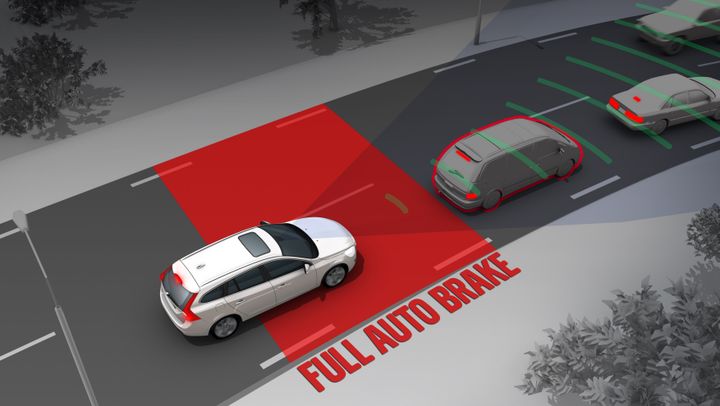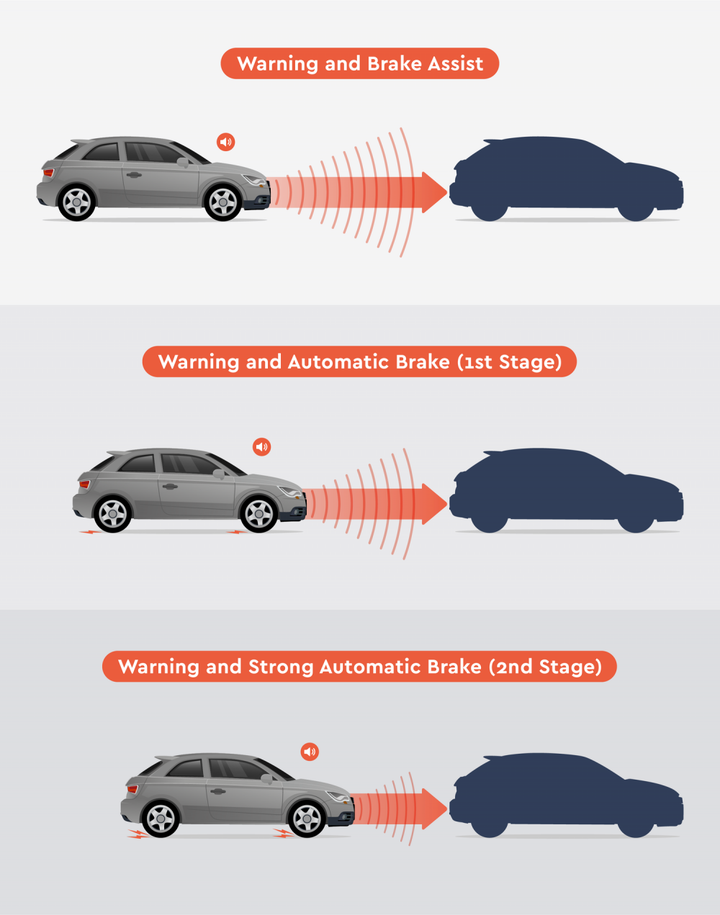


Autonomous Emergency Braking (AEB) technology has emerged as a game-changer in the realm of vehicle safety, holding the potential to dramatically reduce the occurrence and severity of collisions on our roads. By leveraging an intricate network of sensors and advanced algorithms, AEB systems can identify impending collisions and automatically engage the brakes, even in situations where the driver is unable to react in time. This article will provide an in-depth exploration of the inner workings of AEB, its numerous benefits, real-world performance data, integration with other advanced driver assistance systems (ADAS), regulatory requirements, and industry adoption trends. Furthermore, we will address the limitations and considerations associated with this life-saving technology.

Autonomous Emergency Braking (AEB), also referred to as automatic emergency braking or collision avoidance systems, is a cutting-edge driver assistance technology that continuously monitors a vehicle's surroundings, detects potential collision risks, and automatically applies the brakes to prevent or mitigate the impact of a crash. This technology acts as a critical safety net, offering an additional layer of protection that extends beyond the driver's reactions.
The significance of AEB in enhancing vehicle safety cannot be overstated. Numerous studies have demonstrated that AEB can reduce the incidence of rear-end collisions by up to 50% and significantly diminish the severity of crashes that do occur. As the adoption of this technology becomes more widespread, the potential for saving lives and minimizing the number of accidents on our roads grows exponentially.
The foundation of AEB systems lies in a sophisticated array of sensors that constantly monitor the road ahead, gathering data on the vehicle's surroundings. These sensors typically include:
| Sensor Type | Function |
|---|---|
| Radar | Detects the presence, distance, and speed of objects in front of the vehicle, even in low visibility conditions. |
| Cameras | Captures images of the road ahead, enabling the AEB system to identify and classify potential obstacles, such as vehicles, pedestrians, and cyclists. |
| Lidar | Some advanced AEB systems incorporate lidar sensors, which use laser beams to create a detailed 3D map of the vehicle's surroundings. |
The data collected by these sensors is processed by complex algorithms that continuously evaluate the risk of a collision. If the system determines that a collision is imminent and the driver has not responded to warnings, it will automatically apply the brakes to reduce the vehicle's speed and minimize the impact.
The seamless integration of AEB with the vehicle's braking system is paramount to its effectiveness. When the AEB system detects an impending collision, it can swiftly and forcefully apply the brakes, often faster than a human driver can react. This rapid response time can be the difference between a minor fender-bender and a severe, potentially life-threatening crash.
The primary advantage of AEB technology lies in its ability to prevent collisions or significantly reduce their severity. By automatically applying the brakes when a driver fails to react in time, AEB systems can help avoid accidents altogether or minimize the force of impact, thereby reducing the risk of injury or death to vehicle occupants and other road users.
Furthermore, AEB technology can compensate for human error and slow reaction times, which are common factors in many accidents. Even the most attentive drivers can become distracted or fail to react quickly enough in emergency situations. AEB serves as a vital backup, intervening when the driver may not be able to.
The widespread adoption of AEB technology has the potential to greatly improve overall road safety. As more vehicles are equipped with this life-saving feature, the number and severity of accidents are expected to decrease, leading to fewer injuries, fatalities, and economic losses associated with traffic collisions.
Extensive research has demonstrated the effectiveness of AEB systems in real-world scenarios. One of the most notable benefits is the reduction in rear-end collisions, which are among the most common types of accidents on the road.
| Study | Reduction in Rear-End Collisions |
|---|---|
| Study 1 | 38% |
| Study 2 | 43% |
| Study 3 | 50% |
In addition to preventing collisions with other vehicles, advanced AEB systems are also capable of detecting pedestrians and cyclists. This is particularly important in urban environments, where vulnerable road users are more likely to be involved in accidents. The latest AEB systems use a combination of radar and cameras to identify a wider range of obstacles, ensuring that the technology can protect not only vehicle occupants but also those sharing the road.
It is important to note that the performance of AEB systems can be affected by various weather and lighting conditions. While radar sensors can function well in low visibility situations, such as heavy rain or fog, the effectiveness of camera-based systems may be reduced in these conditions. However, the continuous advancement of sensor technology and data processing algorithms is helping to improve the performance of AEB systems in challenging environments.
AEB technology is often integrated with other advanced driver assistance systems (ADAS) to provide a comprehensive safety package. Some of the most common ADAS features that work in conjunction with AEB include:
Forward collision warning (FCW) systems: FCW systems alert drivers when they are approaching an obstacle too quickly, giving them time to react and avoid a collision. If the driver fails to respond, the AEB system can then take over and automatically apply the brakes.
Adaptive cruise control (ACC): ACC systems maintain a set speed and distance from the vehicle ahead, automatically adjusting the speed to maintain a safe following distance. When integrated with AEB, ACC can help prevent collisions by slowing down or stopping the vehicle if the traffic ahead comes to a standstill.
Lane departure warning (LDW): LDW systems monitor the vehicle's position within its lane and alert the driver if they begin to drift out of their lane without signaling. While not directly related to AEB, LDW can help prevent accidents caused by driver inattention or fatigue.
The integration of these ADAS features with AEB creates a more comprehensive safety net, addressing a wider range of potential accident scenarios and providing drivers with multiple layers of protection.
Recognizing the life-saving potential of AEB technology, many countries have begun to mandate its inclusion in new vehicles.
European Union: AEB has been mandatory on all new vehicle models since 2022.
United States: A voluntary commitment by automakers has led to AEB becoming standard on most new cars as of 2022.
The inclusion of AEB in vehicle safety ratings, such as the Euro NCAP and the U.S. NCAP, has also driven consumer demand for this technology. As consumers become more aware of the benefits of AEB, they are increasingly seeking out vehicles that offer this feature, further encouraging manufacturers to make it standard across their model ranges.
Looking to the future, the continued advancement of AEB technology is expected to bring even greater benefits. As sensor technology improves and data processing algorithms become more sophisticated, AEB systems will be able to detect and respond to a wider range of potential collision scenarios, further reducing the risk of accidents.
Despite the numerous benefits of AEB technology, it is important to acknowledge its limitations and the considerations that come with its use. One of the primary limitations is the system's dependence on speed and braking distance. While AEB can significantly reduce the severity of collisions, it may not be able to prevent accidents altogether in situations where the vehicle is traveling at high speeds or there is insufficient distance to bring the vehicle to a complete stop.
Another consideration is the potential for sensor obstructions and false positives. Dirt, snow, or other debris on the sensors can impair their ability to accurately detect obstacles, potentially leading to reduced performance or false activations of the AEB system. Regular maintenance and cleaning of the sensors are essential to ensure optimal performance.
It is crucial for drivers to understand that AEB is not a substitute for attentive driving and should not lead to overreliance on the technology. While AEB can provide a valuable safety net, drivers must remain vigilant and be prepared to take control of the vehicle when necessary. Overreliance on AEB could potentially lead to drivers becoming less attentive, ironically increasing the risk of accidents.
Autonomous Emergency Braking technology represents a significant leap forward in vehicle safety, offering the potential to save countless lives and reduce the severity of accidents on our roads. By automatically applying the brakes when a collision is imminent, AEB systems provide a crucial safety net, compensating for human error and slow reaction times.
As the technology continues to advance and become more widely adopted, the benefits of AEB will only grow. However, it is essential for drivers to understand the capabilities and limitations of these systems and to remain attentive behind the wheel. By combining the power of AEB with responsible driving habits, we can work towards a future with safer roads for all.
Repairing an AEB system can be expensive if the sensors, cameras or radar are damaged. Costs vary widely depending on the vehicle make and extent of damage, but can easily range from several hundred to over a thousand dollars.
Surveys show that most drivers appreciate the added safety and convenience of AEB. However, some find the systems can be overly sensitive at times, activating in situations that don't actually require emergency braking.
As of 2021, approximately 50% of new vehicles sold in the US have AEB as a standard feature. However, since most vehicles on the road are older, estimates suggest only around 15-20% of the total US vehicle fleet is equipped with AEB so far.
Studies have found AEB to be one of the most effective ADAS technologies, reducing rear-end collisions by up to 50%. Other systems like blind spot warning and lane departure warning have smaller impact, reducing collisions by 14% and 11% respectively according to the Insurance Institute for Highway Safety.
The performance of AEB systems can be significantly degraded if the sensors or cameras are obstructed. Drivers need to keep the sensors clean and may have to manually deactivate AEB in some situations like heavy snow.
AEB systems are primarily designed to detect vehicles, pedestrians and cyclists. Most current systems are not capable of detecting animals, though some newer high-end systems are beginning to add animal detection capabilities.
A 2019 study by the Insurance Institute for Highway Safety found that pedestrian detection AEB systems reduced pedestrian crashes by 27%. The impact was even greater, at 30%, in the dark conditions where the majority of pedestrian collisions occur.
No, automakers source AEB technology from a variety of Tier 1 suppliers including Bosch, Continental, Delphi, Denso, Mobileye and others. The specific components and software used can vary between automakers and even between different models from the same automaker.
As of 2022, AEB is required on most new commercial vehicles over 8,500 lbs in the US. This includes heavy-duty trucks, buses, and motorcoaches. The European Union has required AEB on heavy trucks and buses since 2015.
Some studies estimate that vehicles with AEB have 2-3% better fuel economy in real-world driving. This is because AEB can help optimize inter-vehicle spacing and smooth out traffic flow. However, the fuel savings are secondary to the primary safety benefits.

Miguel started tinkering with car radios as a teenager, fascinated by the intricate dance of wires and circuits. This passion led him to pursue a career as an automotive electrician. For the past 10 years, Miguel has tackled everything from flickering headlights to mysterious electrical gremlins. He thrives on troubleshooting electrical problems and enjoys sharing his knowledge to empower car owners to understand their vehicles better.










